
Cunard is a British shipping and cruise line based at Carnival House at Southampton, England, operated by Carnival UK and owned by Carnival Corporation & plc. Since 2011, Cunard and its three ships have been registered in Hamilton, Bermuda.

United States Lines was the trade name of an organization of the United States Shipping Board (USSB), Emergency Fleet Corporation (EFC) created to operate German liners seized by the United States in 1917. The ships were owned by the USSB and all finances of the line were controlled by the EFC. Among the notable ships of this period was Leviathan, a contender for largest ship in the world for a time.
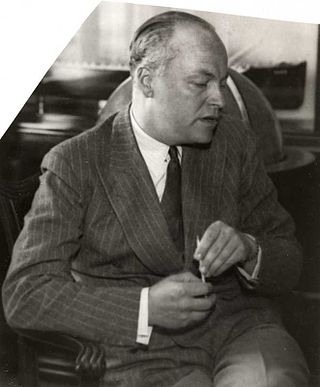
Leif Høegh was a Norwegian shipowner. He founded the international shipping company known as Leif Höegh & Co in 1927.

Swedish American Line was a Swedish passenger shipping line. It was founded in December 1914 under the name Rederiaktiebolaget Sverige-Nordamerika and began ocean liner service from Gothenburg to New York in 1915. In 1925 the company changed its name to Svenska Amerika Linien / Swedish American Line.
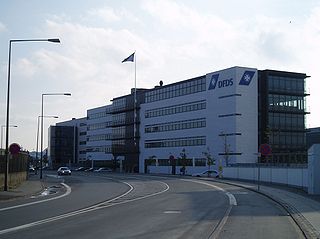
DFDS is a Danish international shipping and logistics company. The company's name is an abbreviation of Det Forenede Dampskibs-Selskab. DFDS was founded in 1866, when C.F. Tietgen merged the three biggest Danish steamship companies of that day.

The Hamburg-Amerikanische Packetfahrt-Aktien-Gesellschaft (HAPAG), known in English as the Hamburg America Line, was a transatlantic shipping enterprise established in Hamburg, in 1847. Among those involved in its development were prominent citizens such as Albert Ballin, Adolph Godeffroy, Ferdinand Laeisz, Carl Woermann, August Bolten, and others, and its main financial backers were Berenberg Bank and H. J. Merck & Co. It soon developed into the largest German, and at times the world's largest, shipping company, serving the market created by German immigration to the United States and later, immigration from Eastern Europe. On 1 September 1970, after 123 years of independent existence, HAPAG merged with the Bremen-based North German Lloyd to form Hapag-Lloyd AG.

CP Ships was a large Canadian shipping company established in the 19th century. From the late 1880s until after World War II, the company was Canada's largest operator of Atlantic and Pacific steamships. Many immigrants travelled on CP ships from Europe to Canada. The sinking of the steamship RMS Empress of Ireland just before World War I was the largest maritime disaster in Canadian history. The company provided Canadian Merchant Navy vessels in World Wars I and II. Twelve vessels were lost due to enemy action in World War II, including the RMS Empress of Britain, which was the largest ship ever sunk by a German U-boat.
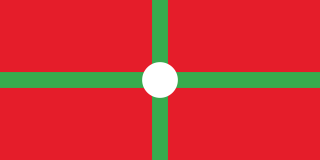
Ellerman Lines was a UK cargo and passenger shipping company that operated from the late nineteenth century and into the twentieth century. It was founded in the late 19th century, and continued to expand by acquiring smaller shipping lines until it became one of the largest shipping firms in the World. Setbacks occurred through heavy losses to its merchant fleet in the First and Second World Wars but were overcome in each case.
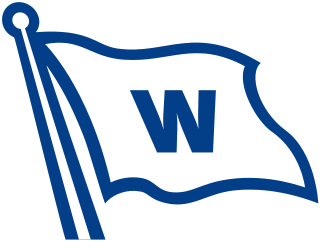
Wilh. Wilhelmsen Holding ASA (WWH) is a Norwegian multinational maritime group, headquartered in Lysaker, Norway. The group employs more than 21,000 people and has operations in 75 nations. The Wilhelmsen group operates the largest maritime network in the world, with over 2200 locations worldwide.

MS Vistafjord was an ocean liner that was built as a combined liner/cruise ship in 1973 by Swan Hunter Shipbuilders in the United Kingdom for the Norwegian America Line. In 1983 she was sold to Cunard Line, retaining her original name until 1999 when she was renamed Caronia. In 2004 she was sold to Saga and sailed as Saga Ruby until sold in 2014 for use as a floating hotel and renamed Oasia. This never came to fruition. Her owners went bankrupt, and in April 2017 she arrived at Alang, India for scrapping.

The Black Ball Line was a passenger line founded by a group of New York Quaker merchants headed by Jeremiah Thompson, and included Isaac Wright & Son (William), Francis Thompson and Benjamin Marshall. All were Quakers except Marshall.

MS Oslofjord was an ocean liner built in 1938 by A/G Weser Shipbuilders, Bremen, Germany, for Norwegian America Line. She was of 18,673 gross register tons and could carry 860 passengers. She would have an uneventful career until 1939 were two separate incidents happened. One from 27 April 1939, where she collided with the American an pilot boat, and another where she struck a mine sinking her.

Leif Höegh & Co is a shipping company founded in 1927 by Norwegian Leif Høegh (1896-1974). Since 2006 the company has been structured as two separate entities, Höegh Autoliners and Höegh LNG, with Leif Höegh & Co acting as a common holding company.
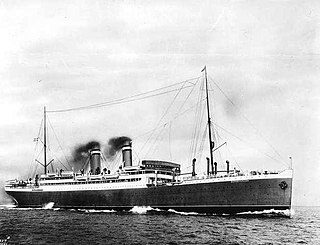
SS Bergensfjord was a Norwegian ocean liner that sailed for the Norwegian America Line to the United States. During the Second World War she was requisitioned by the British Ministry of War Transport and used as a troop ship. After the war she continued sailing as a Trans-Atlantic passenger liner, first for South American owners, then for an Israeli company.
Farrell Lines Incorporated was a boat company named in 1948 after James A. Farrell, Jr., and John J. Farrell, sons of James Augustine Farrell, president of US Steel. The company was previously known as American South African Lines (ASAL). It was a passenger line and cargo line in regular service from New York City to South Africa stopping at Cape Town, Port Elizabeth, Durban and Lourenço Marques (Maputo) in Mozambique. The ships were well-appointed and carried about 180 passengers.
Trondhjemsfjord was a cargo passenger steamship built in 1911 by the Northumberland Shipbuilding Co of Newcastle for Furness, Withy & Co of West Hartlepool. The ship was sold shortly thereafter to the Norwegian America Line to run on their route between Norway and the United States.

RMS Parthia was the second of two all first class transatlantic passenger cargo liners built for the Cunard Line. She later served on the London to Auckland route for the New Zealand Shipping Company under the name Remuera, and still later as a Pacific cruise ship under the name Aramac. She was scrapped in 1969–70.

United European Car Carriers (UECC) is a Norwegian roll-on/roll-off shipping line, created in 1990 and based in Oslo, Norway. The company primarily transports cargo on short sea routes within Europe.
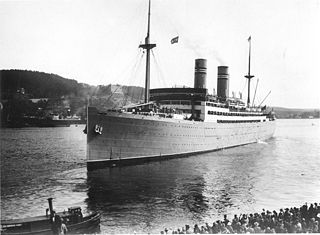
SS Stavangerfjord was a Norwegian passenger ocean liner that sailed for the Norwegian America Line between Norway and the United States and sailed periodically to Canada. She was the third ship of the Norwegian American Line, and similar to the company's first two ships. SS Stavangerfjord was built by Cammell Laird in Birkenhead, England. The ship was launched on 21 May 1917, and was put into service in April 1918. The ship sailed to New York and due to World War I, it did not arrive in Bergen until 21 September 1918. In 1924 her fuel was converted from coal to oil combustion.
Weyerhaeuser Steamship Company was a cargo Liner company founded in Tacoma, Washington. Weyerhaeuser Steamship Company was founded by Weyerhaeuser Company in 1933. Weyerhaeuser is one of the largest lumber and paper companies in the United States. First called the Weyerhaeuser Timber Company which started with ships for towing logs in the Northwestern United States. Weyerhaeuser started Weyerhaeuser Timber Company with a ship he acquired in 1892. The log towing ship was a 140-foot sternwheeler built for the partnership, Weyerhaeuser and Denkman Company. In 1923 Weyerhaeuser added to ocean lumber cargo ship the SS Pomona and the SS Hanley. The two ships took lumber to the East Coast. In 1933 F. Weyerhaeuser starts the Weyerhaeuser Steamship Company and moves the headquarters to Newark, New Jersey. At the outbreak of World War II the US government orders the four Weyerhaeuser to take supplies to the British army in Egypt. The next year the other four company's ships are requisitioned by the War Shipping Administration. During World War II the Weyerhaeuser Steamship Company was active in charter shipping with the Maritime Commission and War Shipping Administration. During wartime, the Weyerhaeuser Steamship Company operated Victory ships and Liberty shipss. The ship was run by its crew and the US Navy supplied United States Navy Armed Guards to man the deck guns and radio. The most common armament mounted on these merchant ships were the MK II 20mm Oerlikon autocannon and the 3"/50, 4"/50, and 5"/38 deck guns. In 1942 the SS Potlatch and the SS Heffron were sunk by German U-boats torpedoes. After the war, Weyerhaeuser Steamship Company purchased four Liberty ships for intercoastal shipping service. In 1950 Weyerhaeuser Steamship Company purchases the Pacific Coast Direct Line and moves its headquarter from Newark to San Francisco. In 1962 the Weyerhaeuser Line is started and Weyerhaeuser Steamship becomes a division of Weyerhaeuser Company.


























